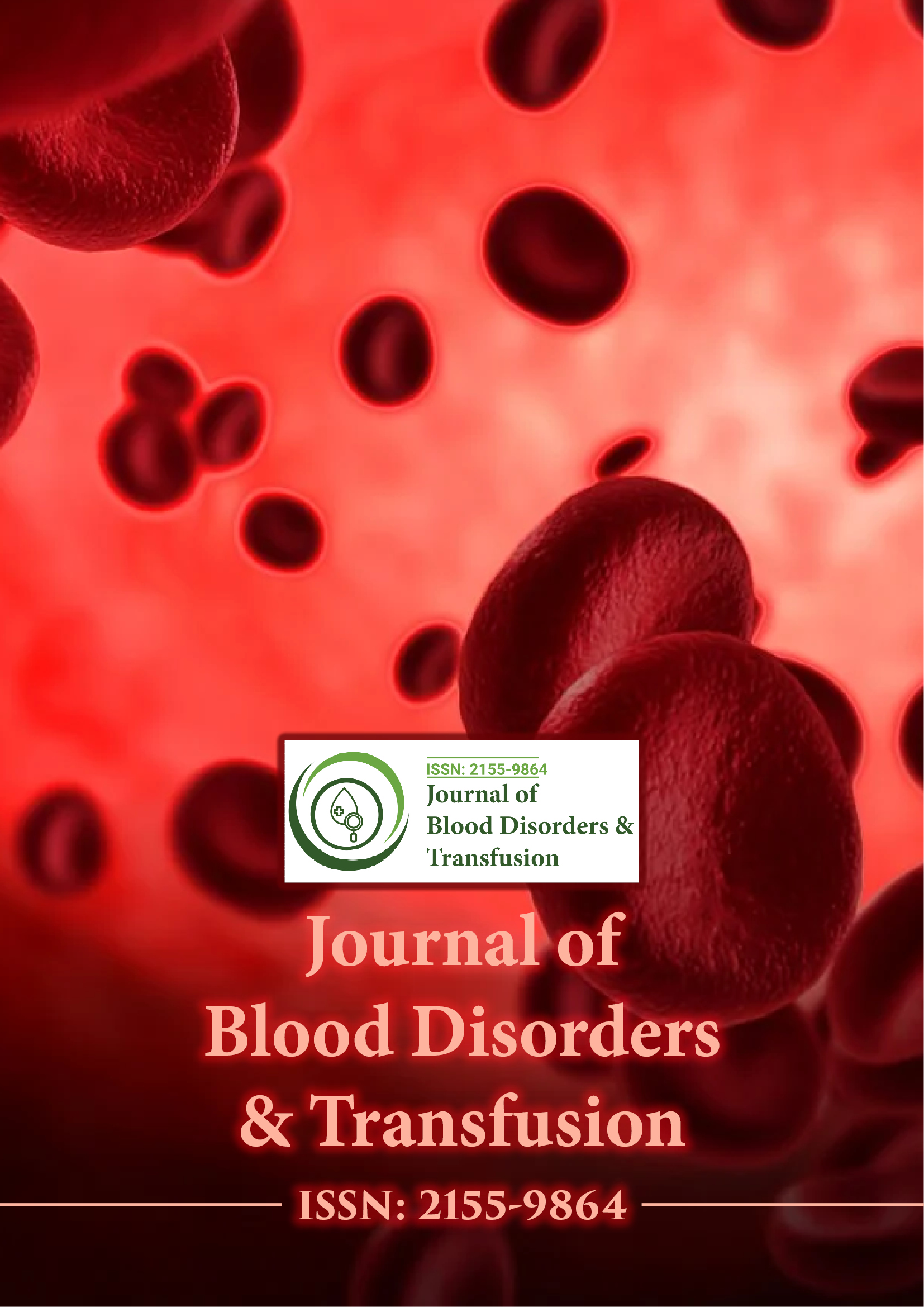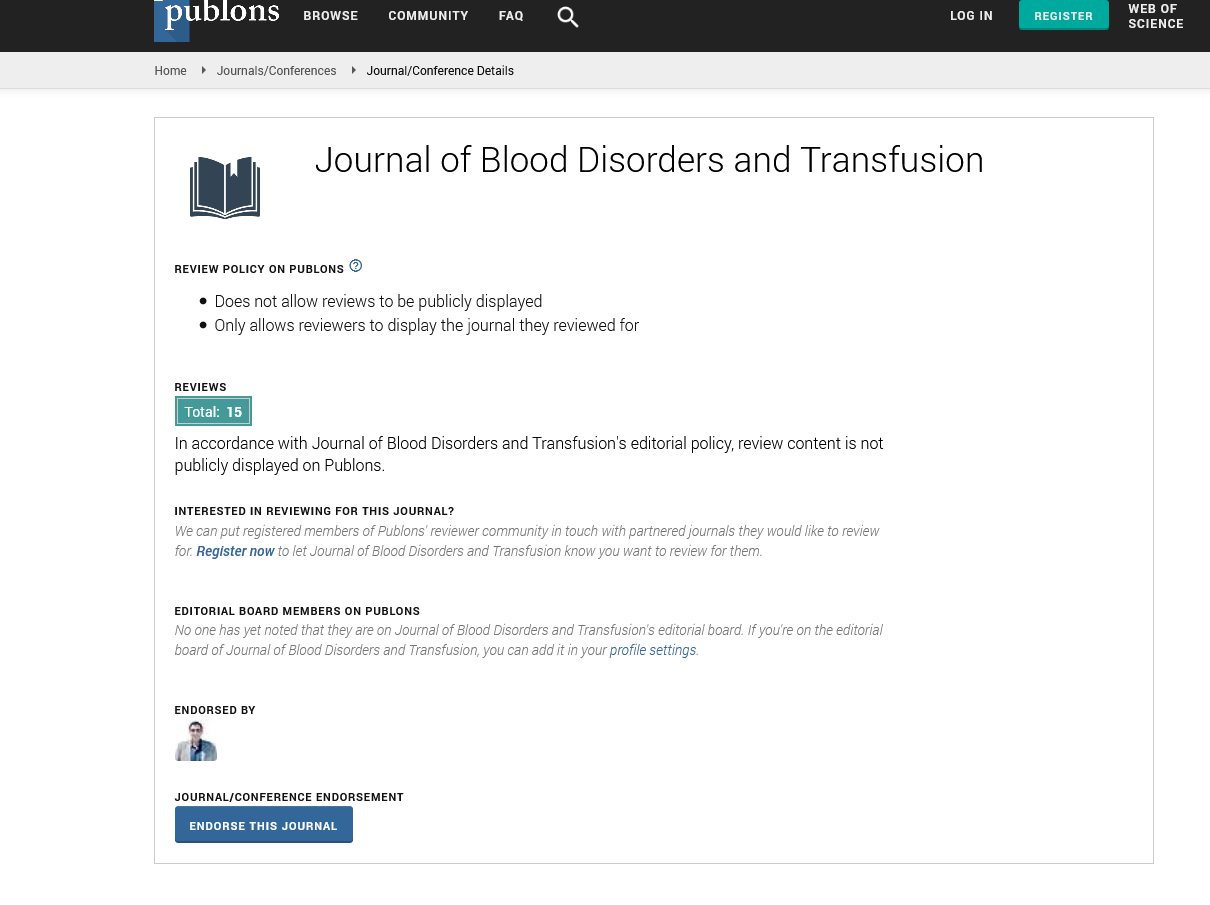Indexed In
- Open J Gate
- Genamics JournalSeek
- JournalTOCs
- Ulrich's Periodicals Directory
- RefSeek
- Hamdard University
- EBSCO A-Z
- OCLC- WorldCat
- Proquest Summons
- Publons
- Geneva Foundation for Medical Education and Research
- Euro Pub
- Google Scholar
Useful Links
Share This Page
Journal Flyer

Open Access Journals
- Agri and Aquaculture
- Biochemistry
- Bioinformatics & Systems Biology
- Business & Management
- Chemistry
- Clinical Sciences
- Engineering
- Food & Nutrition
- General Science
- Genetics & Molecular Biology
- Immunology & Microbiology
- Medical Sciences
- Neuroscience & Psychology
- Nursing & Health Care
- Pharmaceutical Sciences
The incidence of Paroxysmal Nocturnal Hemoglobinuria(PNH) cell clones in the Nordic countries
16th World Hematology Congress
March 18-19, 2019 | Rome, Italy
Eirik Tjonnfjord, Eva-Stina Korkama, M.D., Ulrik Overgaard, M.D., Mariann Vikman, M.Sc., Ahmad Ahmadi, M.Sc., PhD, Tarja-Terttu Pelliniemi,M.D., PhD, Hanna Jarva, M.D., PhD, Seppo Meri M.D., PhD; Anna-Elina Armstrong, M.D., PhD and Christian Kjellander M.D., PhD
Department of Bacteriology and Immunology, University of Helsinki
Department of Clinical Pathology and Cytology, Karolinska University Hospital Huddinge, Stockholm, Sweden
Tampere University Hospital, Fimlab, Tampere, Finland;
Helsinki University Hospital Laboratory (HUSLAB), Helsinki, Finland
Coagulation Disorder Unit, Helsinki University Central Hospital Comprehensive Cancer Center
Department of Hematology, Karolinska University Hospital Solna, Stockholm, Sweden
Scientific Tracks Abstracts: Blood Disord Transfus
Abstract:
Paroxysmal nocturnal hemoglobinuria (PNH) is a rare aquired hematopoetic stem cell disorder characterized
by the triad of intravascular hemolysis, thrombosis and bone marrow failure. The symptoms are caused
by complement activation on the cell surface of hematopoetic cells. The detection of a PNH clone is made by
analyzing GPI-anchored molecules on blood cells by flowcytometry. The only curative treatment, allogeneic
stem cell transplantation is limited by short- and long-term consequences, and donor availability. Eculizumab, a
humanized monocolonal antibody against terminal complement protein C5 is currently the most effective treatment.
Development of modern flow cytometric techniques have improved diagnostic accuracy and created possibilities for
follow-up of small clones. Correct estimates of incidence and prevalence are of importance also health economically.
The Nordic countries have a unique system of record data bases and centralization of diagnostics to a few centers
which allows characterizing incidence and prevalence accurately. Our aim is to describe PNH clones detected over a
period of 6 years by flow cytometry in Denmark (Den), Finland (Fin), Norway (Nor), and Sweden (Swe).
Methods: Data was collected from the Stockholm and Gotland regions in Sweden, Copenhagen region in Denmark,
Oslo region in Norway and from Finland. All laboratories used accredited methods. The study population included
all patient samples referred to the laboratories for PNH testing between 2011 and 2016. We included all newly
detected PNH clones in neutrophils between 0.1-100% in the study.
Results:The mean incidence of newly detected PNH clones between 0.1 and 100% was 2.33 per year and million
inhabitants in the Nordics. of all newly diagnosed PNH clones, 41% were <1% and 17% >50%. The mean age at
detection of the clone was 52 years (6 to 90 years). PNH clones were evenly distributed between age groups, and there
was no gender difference.
Conclusion: This is the first study to report incidence of PNH clones in the Nordic countries, which is higher (2.33/
million) than previously reported in other countries (1.3/million). In the Yorkshire data only 18% of the PNH clones
were <1% compared to 41 % in our material. This may reflect increase in testing for PNH clones in patients with
aplastic anemia, myelodysplastic syndrome or other conditions associated with PNH, or more sensitive modern
laboratory methods. In the Finnish data 49% of the patients had a clone <1% compared to 28%, 38% and 39% in
Denmark, Norway and Sweden, respectively. This may explain the seemingly higher incidence of PNH clones in
Finland. Our study has given an estimate of PNH incidence in the Nordic countries and important information for
further health economical studies.
Recent Publications
1. PNH - Paroxystisc Nocturnal Haematoglobuinuri, Eirik Tjonnfjord, DSTH-forum no. 4, 2011.
2. Author of the Norwegian guidelines for diagnostics and treatment of PNH (Paroxystisc Nocturnal
Haematoglobuinuri).
3. NOTCH1 and SF3B1 mutations can be added to the hierarchical prognostic classification in chronic lymphocytic
leukemic. Mansouri L, Cahill N, Gunnarsson R, Smedby KE, Tjonnfjord E, Hjalgrim H, G Juliusson Geisler C
and R Rosenquist. Leukaemia 2013 February; 27(2):512-14.
4. Envenomation by the common European adder (Vipera berus); a case series of 219 patients. Eur J Emerg Med
2018 nov 12. Hermansen MN, Krug AH, Tjonnfjord E, Braband M
5. Prophylactic use of eculizumab during surgery in chronic cold agglutinin disease, Eirik Tjonnfjord, Oystein
Vengen, Sigbjorn Berentsen and Geir Tjonnfjord. BMJ Case Reports, December 2016
6. Multiple Myeloma or MGUS- important to give the right diagnosis. Eirik Tjonnfjord, Bruno Bengtsson and
Claudia Stahlberg, BJSTR 2018.
Biography :
E Tjønnfjord took his Degree at Odense University Hospital, Denmark. He has worked in the field of hematology with a special interest in the benign hematology. He is now starting a PhD focusing on the treatment of ITP and how to improve it.
E-mail: eirik_tjo@hotmail.com

